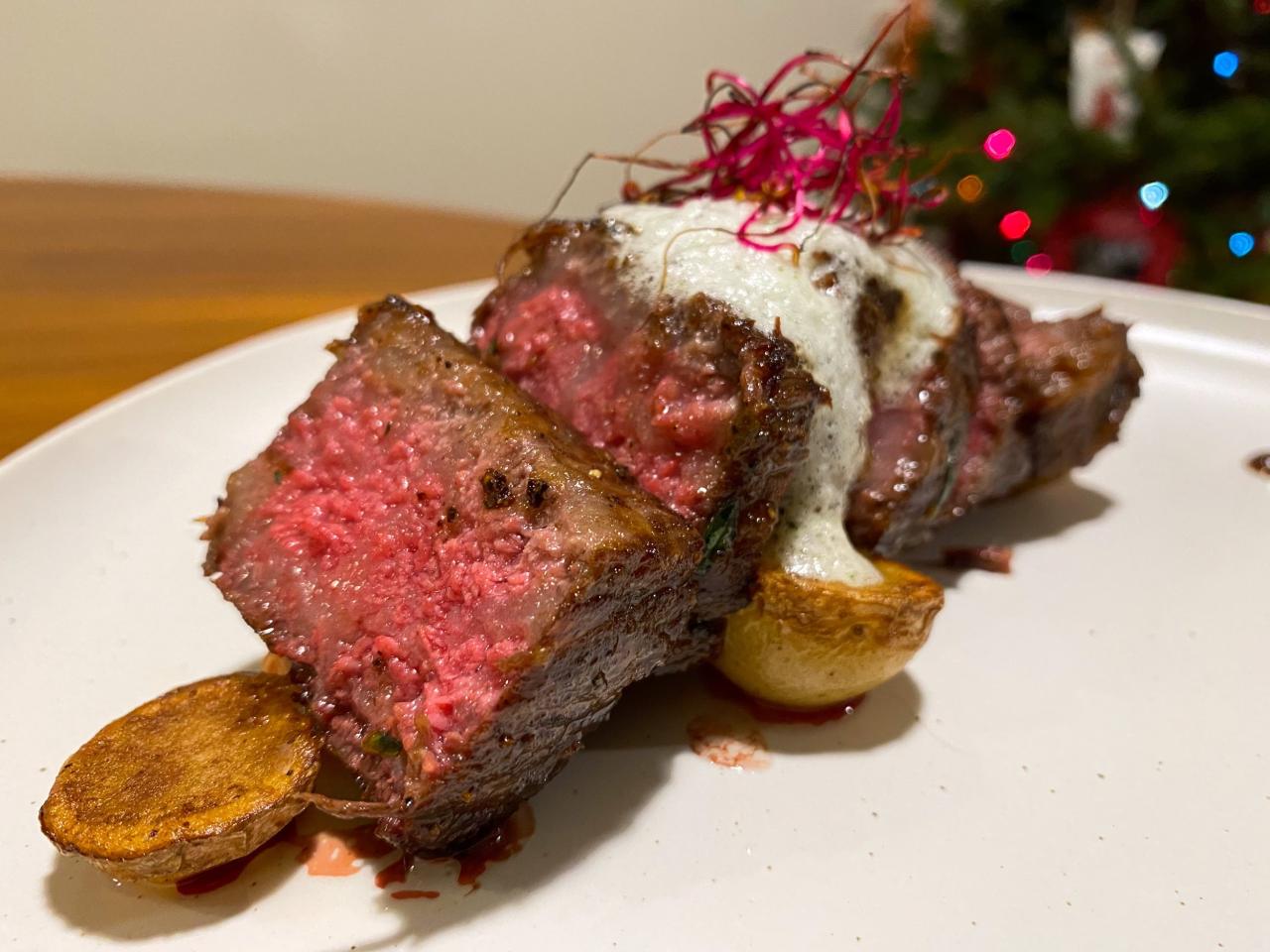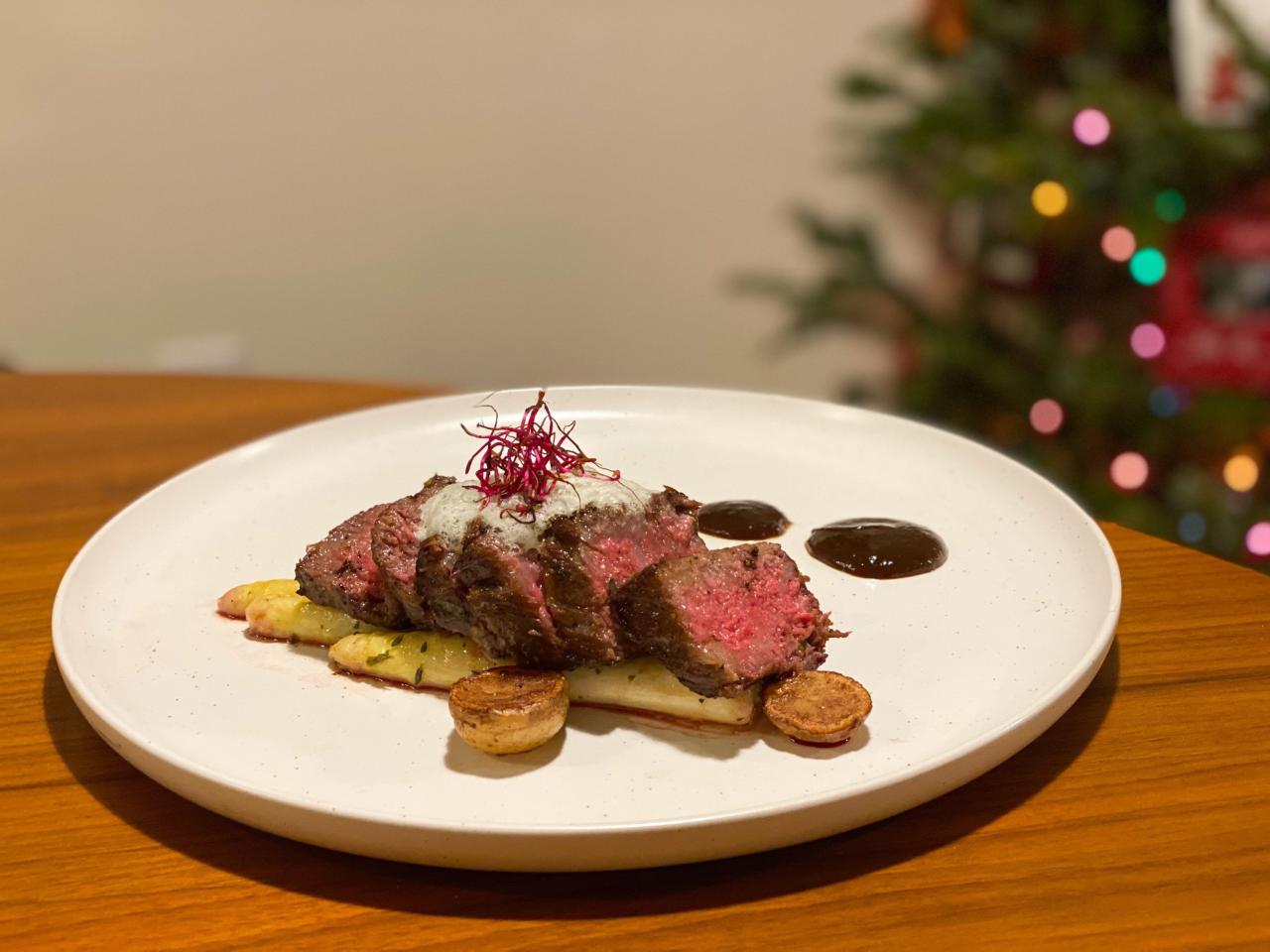Why Thyme Piece is the Secret to Delicious, Restaurant-Quality Meals sets the stage for this enthralling narrative, offering readers a glimpse into a story that is rich in detail and brimming with originality from the outset. Thyme, a humble herb with a powerful punch, has long been a culinary secret weapon, adding depth and complexity to dishes that elevate them from ordinary to extraordinary.
This article explores the fascinating world of thyme, uncovering its unique flavor profile, its historical significance, and its ability to transform everyday meals into restaurant-worthy experiences.
From ancient times, thyme has been revered for its aromatic qualities and medicinal properties. Its distinct flavor, a blend of earthy, slightly peppery, and citrusy notes, lends itself to a wide range of cuisines, from Mediterranean and French to Asian and American.
This versatility makes thyme a true culinary chameleon, capable of enhancing both savory and sweet dishes.
The Power of Thyme
Thyme, a humble herb with a powerful aroma, has been a culinary staple for centuries, adding depth and complexity to dishes around the world. Its unique flavor profile, versatility, and historical significance make it a secret weapon for achieving restaurant-quality meals at home.
The Flavor Profile of Thyme
Thyme’s flavor is characterized by a warm, earthy, and slightly pungent aroma, with notes of camphor and lemon. This complex flavor profile makes it an excellent complement to a wide range of ingredients, from savory meats and vegetables to sweet desserts.
Historical Significance and Cultural Relevance
Thyme has been used for culinary and medicinal purposes for thousands of years. In ancient Egypt, it was used in embalming rituals, while the Greeks believed it possessed magical properties. During the Middle Ages, thyme was highly valued for its medicinal properties, and its use in cooking spread throughout Europe.
Today, thyme remains a beloved herb in many cultures, playing a key role in traditional cuisines.
Thyme in Different Cuisines
Thyme’s versatility makes it a staple in numerous cuisines worldwide.
- French Cuisine:Thyme is a key ingredient in classic French dishes like poulet rôti (roast chicken) and soupe à l’oignon gratinée (French onion soup). It’s often used in combination with other herbs like rosemary and bay leaves to create complex flavor profiles.
- Italian Cuisine:Thyme is a common ingredient in Italian dishes like pasta sauces, stews, and roasted vegetables. It pairs well with tomatoes, garlic, and onions, adding a savory depth to these dishes.
- Mediterranean Cuisine:Thyme is widely used in Mediterranean cuisine, particularly in Greek and Turkish dishes. It’s often combined with oregano, basil, and lemon to create vibrant and aromatic dishes.
- American Cuisine:Thyme is a versatile herb that adds depth and complexity to various American dishes. It’s often used in rubs for grilled meats, in marinades for chicken, and as a flavoring agent in soups and stews.
Thyme’s Culinary Alchemy
Thyme, with its earthy and slightly citrusy aroma, is more than just a garnish. It possesses a transformative power, elevating the taste of simple dishes and infusing them with a restaurant-quality depth. The magic of thyme lies in its ability to enhance natural flavors, create complex flavor profiles, and add a touch of sophistication to even the most basic meals.
Transforming Everyday Dishes
Thyme’s versatility shines in its ability to enhance a wide range of dishes. It complements both savory and sweet flavors, making it a valuable ingredient in various culinary creations.
- Roasted Vegetables:A sprinkle of thyme brings out the sweetness of roasted vegetables like carrots, potatoes, and Brussels sprouts, creating a flavor explosion.
- Grilled Chicken:The combination of thyme and garlic is a classic for grilled chicken, adding a fragrant and savory dimension.
- Pasta Sauces:A pinch of thyme in tomato-based sauces adds complexity and depth, making the sauce more robust and flavorful.
- Soups and Stews:Thyme enhances the richness of soups and stews, creating a warm and comforting aroma.
- Fish Dishes:Thyme pairs well with fish, adding a delicate touch of flavor and complementing the natural sweetness of the fish.
- Bread and Biscuits:A touch of thyme in bread dough or biscuit recipes adds a savory note, making them more flavorful and aromatic.
Cooking Methods and Thyme’s Versatility
Thyme’s versatility extends beyond its flavor; it can be used in various cooking methods, enhancing the taste and aroma of dishes.
- Roasting:Thyme’s aroma intensifies during roasting, infusing the food with a rich, earthy flavor.
- Grilling:The heat of the grill brings out the aromatic qualities of thyme, adding a smoky and savory dimension to grilled dishes.
- Sautéing:Adding thyme to a hot pan releases its aromatic oils, adding a fragrant touch to sautéed vegetables or meats.
- Baking:Thyme’s flavor profile complements sweet and savory baked goods, adding a subtle complexity to cakes, cookies, and savory breads.
The Science Behind Thyme’s Magic
Thyme’s culinary magic stems from a complex interplay of chemical compounds that create its distinctive flavor and aroma. These compounds also contribute to thyme’s potential health benefits, making it more than just a flavorful herb.
The Chemical Composition of Thyme
Thyme’s flavor and aroma are attributed to a variety of volatile oils, phenolic compounds, and other phytochemicals. These compounds work together to create the unique taste and fragrance that we associate with thyme.
- Thymol:This monoterpenoid phenol is the primary compound responsible for thyme’s characteristic pungent aroma. Thymol is a powerful antioxidant and has antimicrobial properties.
- Carvacrol:Another monoterpenoid phenol, carvacrol is present in thyme in varying amounts depending on the variety. It has a strong, spicy aroma and is also known for its antioxidant and antimicrobial properties.
- Linalool:This monoterpene alcohol contributes to thyme’s floral and citrusy notes. It is also known for its calming and sedative effects.
- Other Compounds:Thyme also contains other volatile oils, such as p-cymene, beta-pinene, and borneol, which contribute to its complex flavor profile.
Thyme’s Potential Health Benefits
The chemical compounds present in thyme have been linked to a range of potential health benefits, including:
- Antioxidant Properties:Thymol and carvacrol are potent antioxidants that can help protect cells from damage caused by free radicals. This may contribute to reducing the risk of chronic diseases, such as cancer and heart disease.
- Antimicrobial Properties:Thyme has been used for centuries to treat infections. Its antimicrobial properties are attributed to compounds like thymol and carvacrol, which can inhibit the growth of bacteria, fungi, and viruses.
- Anti-inflammatory Properties:Some studies suggest that thyme may have anti-inflammatory properties, which could help reduce inflammation associated with various conditions, such as arthritis and asthma.
- Digestive Support:Thyme has been traditionally used to aid digestion and relieve symptoms of indigestion. It may help stimulate the production of digestive enzymes and reduce bloating and gas.
Thyme’s Flavor Interactions
Thyme’s unique flavor profile allows it to enhance and complement a wide range of ingredients. Its versatility stems from its ability to interact with other flavors in complex and harmonious ways.
- Meat and Poultry:Thyme’s savory and slightly bitter notes pair well with the richness of meat and poultry. It can be used to enhance the flavor of roasted chicken, lamb, beef, and pork.
- Vegetables:Thyme’s earthy and slightly pungent flavor complements a variety of vegetables, such as tomatoes, onions, garlic, and potatoes. It can be used to add depth and complexity to stews, soups, and roasted vegetables.
- Fish and Seafood:Thyme’s fresh and herbaceous notes can balance the delicate flavors of fish and seafood. It can be used to enhance the flavor of grilled salmon, baked cod, and shrimp scampi.
- Cheese and Eggs:Thyme’s earthy and slightly bitter notes can cut through the richness of cheese and eggs. It can be used to add flavor to omelets, quiches, and cheese sauces.
Elevating Your Kitchen

Mastering the art of using thyme is like unlocking a secret culinary code. This herb, with its versatility and depth of flavor, can elevate even the simplest dishes to restaurant-quality levels. Understanding the nuances of different thyme varieties and mastering the techniques of incorporating them into your cooking will transform your kitchen into a haven of culinary creativity.
Just like a single African violet leaf can be nurtured into a flourishing plant, a sprig of thyme can elevate a simple dish to gourmet heights. Learning the art of propagation, as explained in the article From One to Many: African Violet Propagation Explained , can be applied to the culinary world, too.
By understanding the basic principles of growth and multiplication, you can transform a small amount of thyme into a vibrant herb garden, providing an endless supply for your restaurant-quality meals.
Thyme Varieties and Their Unique Characteristics
Different types of thyme offer a spectrum of flavor profiles, each best suited for specific culinary applications. Understanding these nuances allows you to select the perfect thyme for your dish, enhancing its complexity and depth.
Thyme Variety |
Flavor Profile |
Best Uses |
|---|---|---|
Common Thyme |
Classic, slightly peppery, with notes of lemon |
Roasted vegetables, chicken, fish, soups, stews |
Lemon Thyme |
Bright, citrusy, with a hint of sweetness |
Seafood, poultry, salads, sauces, desserts |
French Thyme |
Intense, slightly bitter, with a strong herbal aroma |
Hearty stews, braised meats, casseroles |
Silver Thyme |
Delicate, slightly minty, with a hint of camphor |
Salads, grilled meats, cheeses |
Caraway Thyme |
Warm, earthy, with a distinct caraway flavor |
Sausages, breads, roasted vegetables |
Incorporating Thyme into Your Cooking, Why Thyme Piece is the Secret to Delicious, Restaurant-Quality Meals
Using thyme effectively requires a balance of understanding its flavor profile, preparation methods, and the appropriate dishes to complement its unique taste.
Step-by-Step Guide to Incorporating Thyme
- Select the Right Thyme:Choose the thyme variety that best complements the dish you are preparing. Consider the flavor profile, intensity, and aroma of each variety.
- Prepare the Thyme:For fresh thyme, remove the leaves from the stem and finely chop them. Dried thyme should be crumbled or ground for a more intense flavor.
- Add Thyme at the Right Time:Fresh thyme is typically added towards the end of cooking, allowing its delicate flavor to infuse the dish without becoming overpowering. Dried thyme, on the other hand, is often added at the beginning of cooking to allow its flavor to develop.
- Experiment with Thyme:Don’t be afraid to experiment with different types of thyme and different methods of incorporating them into your cooking. The possibilities are endless!
Storage and Preparation
- Fresh Thyme:Store fresh thyme in a plastic bag in the refrigerator for up to a week. To preserve its freshness, wrap the sprigs in a damp paper towel before storing.
- Dried Thyme:Store dried thyme in an airtight container in a cool, dark place for up to a year.
Visual Guide to Using Thyme
Thyme can be incorporated into dishes in a variety of ways, each offering a unique visual and flavor experience.
Fresh Sprigs
- Garnish:Add a sprig of fresh thyme to soups, stews, or roasted vegetables for a touch of color and aroma.
- Infusion:Steep fresh thyme sprigs in hot water to create a flavorful tea or broth.
- Flavoring:Tie a few sprigs of fresh thyme together with twine and add them to a pot of simmering liquid for a subtle infusion of flavor.
Dried Leaves
- Seasoning:Sprinkle dried thyme leaves over roasted meats, vegetables, or pasta for a concentrated flavor boost.
- Rubs:Combine dried thyme with other herbs and spices to create flavorful rubs for meats, poultry, or fish.
- Marinades:Infuse dried thyme into marinades for meats or vegetables to enhance their flavor and create a complex aroma.
Infused Oils
- Flavor Enhancement:Infuse olive oil with fresh thyme sprigs for a fragrant and flavorful oil that can be used in salads, drizzled over roasted vegetables, or added to pasta dishes.
- Finishing Touch:Drizzle thyme-infused oil over grilled meats, fish, or vegetables for a finishing touch of flavor and aroma.
- Creative Applications:Use thyme-infused oil to create flavorful sauces, dips, or spreads.
Beyond the Kitchen

Thyme’s influence extends far beyond the culinary realm, captivating senses and offering benefits in diverse applications. From traditional medicine to beauty and crafts, thyme’s versatility showcases its multifaceted nature.
Thyme’s Role in Traditional Medicine
Thyme has a long history of use in traditional medicine, valued for its potential therapeutic properties. Its antimicrobial and antioxidant properties have been explored for centuries.
- Antimicrobial Activity:Thyme contains compounds like thymol and carvacrol, known for their antimicrobial effects against bacteria, fungi, and viruses. These properties have been traditionally used to treat respiratory infections, skin conditions, and digestive issues.
- Antioxidant Properties:Thyme is rich in antioxidants, which help protect cells from damage caused by free radicals. This may contribute to its potential benefits in preventing chronic diseases.
- Respiratory Health:Thyme has been used to relieve symptoms of respiratory ailments like coughs, colds, and bronchitis. Its expectorant properties help loosen mucus and ease breathing.
- Digestive Health:Thyme may aid digestion by stimulating the production of digestive juices and reducing bloating. It has also been traditionally used to treat indigestion and diarrhea.
Thyme in Beauty and Aromatherapy
Thyme’s aromatic and healing properties have found their way into beauty products and aromatherapy practices.
Why Thyme Piece is the Secret to Delicious, Restaurant-Quality Meals? The answer lies in its ability to elevate simple dishes to gourmet levels. Its earthy, slightly lemony aroma and robust flavor add a depth that transforms any recipe. For home cooks, understanding the power of Thyme Piece is crucial, as explained in this insightful article, Why Thyme Piece is a Must-Have Ingredient for Home Cooks.
By incorporating this versatile herb into your cooking, you’ll unlock the secrets to creating restaurant-quality meals in your own kitchen.
- Skincare:Thyme oil is known for its antiseptic and antibacterial properties, making it a popular ingredient in skincare products. It can help combat acne, reduce inflammation, and promote skin healing.
- Hair Care:Thyme’s antimicrobial properties can help fight scalp infections and promote healthy hair growth. It is often included in shampoos and conditioners.
- Aromatherapy:Thyme essential oil has a strong, herbaceous aroma that can be used in aromatherapy to uplift mood, reduce stress, and promote relaxation. It can also be used to relieve headaches and muscle tension.
Thyme in Craft Projects
Thyme’s captivating aroma makes it a versatile ingredient in craft projects, adding a natural touch and fragrance.
- Potpourri:Dried thyme leaves can be combined with other herbs and flowers to create fragrant potpourri. The scent of thyme can create a welcoming atmosphere in homes and offices.
- Scented Candles:Thyme essential oil can be added to candle wax to create scented candles with a refreshing and invigorating aroma. The scent of thyme can help create a calming and relaxing ambiance.
Concluding Remarks

In conclusion, the secret to delicious, restaurant-quality meals lies in the humble thyme sprig. Its versatility, flavor complexity, and health benefits make it a culinary treasure worth exploring. Whether you’re a seasoned chef or a home cook looking to elevate your dishes, incorporating thyme into your repertoire will undoubtedly lead to a world of flavorful possibilities.
So, embrace the power of thyme and embark on a culinary journey that will tantalize your taste buds and leave you craving for more.
FAQs: Why Thyme Piece Is The Secret To Delicious, Restaurant-Quality Meals
How do I store fresh thyme?
To preserve its freshness, store fresh thyme in a sealed container in the refrigerator for up to a week. You can also freeze thyme by wrapping sprigs in plastic wrap or storing them in airtight containers for up to 6 months.
Can I use dried thyme instead of fresh thyme?
Yes, dried thyme is a good substitute for fresh thyme. However, it is less potent than fresh thyme, so you may need to use a slightly larger amount. As a general rule, use 1 teaspoon of dried thyme for every 3 tablespoons of fresh thyme.
What are some other culinary herbs that pair well with thyme?
Thyme complements a variety of herbs, including rosemary, sage, oregano, parsley, and basil. These combinations can create complex and harmonious flavor profiles in your dishes.
